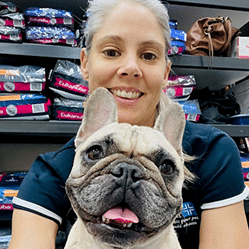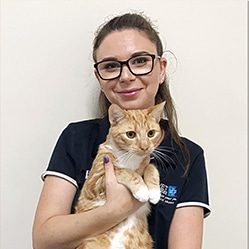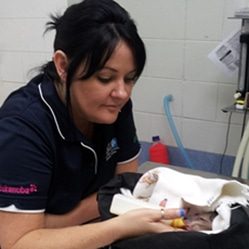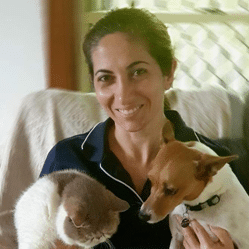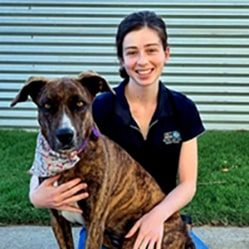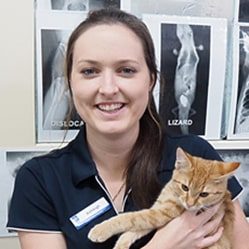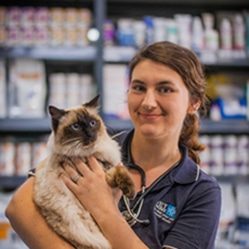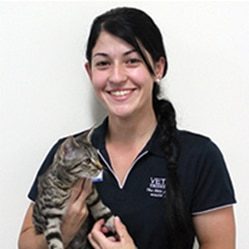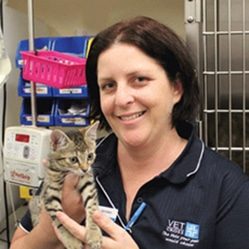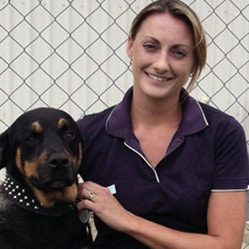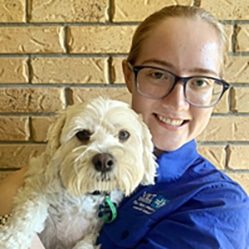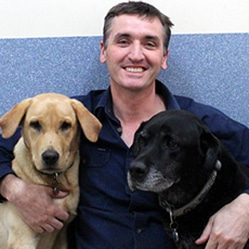Diabetes mellitus is a condition where there is an excessive amount of blood sugar or glucose, caused by an inadequate production of insulin, or a resistance to the actions of insulin. It can usually be controlled by treatment, usually insulin injections, diet, and weight control. Untreated, diabetes can progress to a potentially fatal condition called ketoacidosis.
What are the signs of diabetes?
Diabetes is more commonly seen in middle-aged to older cats, and in males. Burmese cats are more commonly affected than other cats. Obesity also predisposes to development of diabetes, as do some medications.The signs include increased thirst and therefore urination, increased appetite, and weight loss.
How is diabetes diagnosed?
Diagnosis of diabetes depends on the finding of high blood sugar in the blood and the urine, together with the signs of disease above. This can be difficult in cats as blood sugar rises when cats are stressed, as often happens with visits to the veterinarian, and with blood sampling. In these cases, blood is sent to the laboratory for a specific test that measures the average level of blood glucose over the past few weeks.
How is diabetes treated?
Some cats are in a subclinical state (that is, they have diabetes without the signs), and the presence of another disease causes them to become clinical. In these cases, diagnosis and treatment of the concurrent disease will be sufficient.If a diabetic cat is untreated, he may develop severe illness called diabetic ketoacidosis due to derangements in metabolism. These cats can be very ill with vomiting, weakness, coma, and eventually death. Hospitalisation will be required to treat these secondary complications as well as controlling the diabetes.A healthy diabetic cat will be treated with insulin injections. These are usually twice daily and are easy and painless to give. The type of food is important, as is the timing of feeding to correspond to the action of the insulin. Your cat may be hospitalised for a few days to establish the initial insulin dose, although this may be difficult if your cat is stressed by being in hospital thereby raising it’s blood glucose levels, or if he won’t eat properly.
What is the long-term outlook for my cat?
After being discharged from hospital, your cat will need to return for a serial glucose curve to look at the levels of blood glucose and how they change during the day. Adjustments will be made in the amount of insulin given, and sometimes in the timing of feeding.An obese cat will be required to lose weight under the guidance of your veterinarian. Most diabetic cats with normal bodyweight can continue to be fed their regular food, though diets high in simple sugars (semimoist foods) should be avoided. There is continuing debate over the dietary management of feline diabetes. New evidence suggests that feeding a high protein diet is advantageous for diabetic cats. Your veterinarian will advise you of the most appropriate diet for your cat. It is important to give the prescribed amount at the prescribed time to correspond with the peak activity of the insulin injection.Since insulin requirements can change with time, sometimes even reducing to zero, diabetic cats need to be monitored closely. Watch for the return of the signs of illness, such as drinking excessively, and the level of appetite and activity. Report any changes to your veterinarian.
Could my cat develop hypoglycaemia?
If your cat receives too much insulin, blood sugar levels could become very low. Hypoglycaemia manifests as weakness and lethargy, unsteadiness, trembling, and sometimes seizures. Giving a glucose or sugar solution will help alleviate these signs. Obtain veterinary advice as soon as possible, and an adjustment in the insulin dose may be required.
















